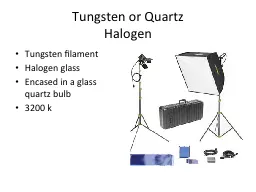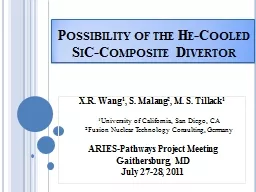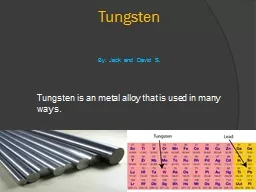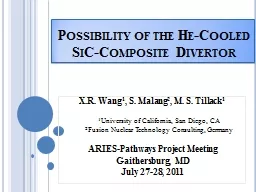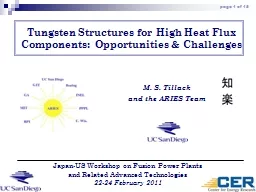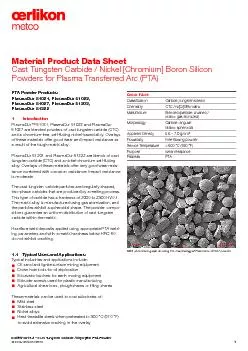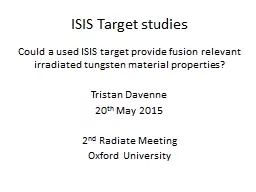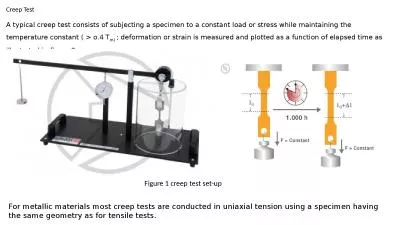PPT-Fracture and Creep in an All-Tungsten Divertor for ARIES
Author : alexa-scheidler | Published Date : 2017-07-12
Jake Blanchard University of Wisconsin Madison August 2012 Introduction The ARIES Project is exploring the feasibility of using tungsten as a structural material
Presentation Embed Code
Download Presentation
Download Presentation The PPT/PDF document "Fracture and Creep in an All-Tungsten Di..." is the property of its rightful owner. Permission is granted to download and print the materials on this website for personal, non-commercial use only, and to display it on your personal computer provided you do not modify the materials and that you retain all copyright notices contained in the materials. By downloading content from our website, you accept the terms of this agreement.
Fracture and Creep in an All-Tungsten Divertor for ARIES: Transcript
Download Rules Of Document
"Fracture and Creep in an All-Tungsten Divertor for ARIES"The content belongs to its owner. You may download and print it for personal use, without modification, and keep all copyright notices. By downloading, you agree to these terms.
Related Documents




